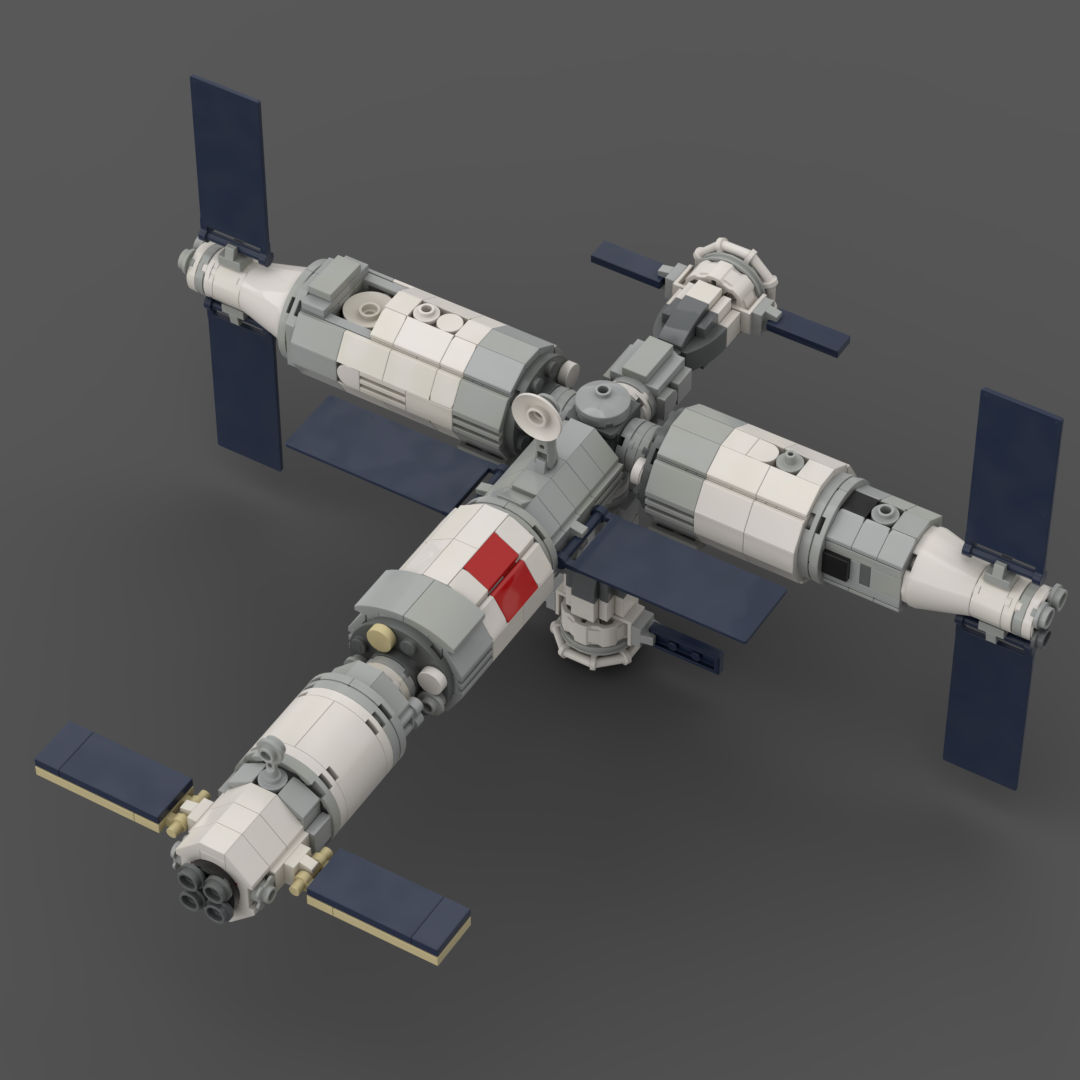
LEGO Designer:
Sebastian Schön (MoppeW40k)
Designed:
May 2020
Categories:
Space Stations, All, Space Agency - CNSA
Launch Vehicle Details
Stages:
Length:
Diameter:
Mass at Launch:
Low Earth Orbit Capacity:
Total Thrust:
Apogee:
Class:
The Chinese large modular space station is a planned space station to be placed in Low Earth orbit. The planned Chinese Space Station will be roughly one-fifth the mass of the International Space Station and about the size of the decommissioned Russian Mir space station. The Chinese station is expected to have a mass between 80 and 100 tonnes (180,000 and 220,000 lb). Operations will be controlled from the Beijing Aerospace Command and Control Center in China.
Core Cabin Module – Tianhe
The Tianhe (“Joining of the Heavens”) Core Cabin Module provides life support and living quarters for three crew members, and provides guidance, navigation, and orientation control for the station. The module also provides the station’s power, propulsion, and life support systems. The module consists of three sections, living quarters, service section and a docking hub. The living quarters will contain a kitchen and toilet, fire control equipment, atmospheric processing and control equipment, computers, scientific apparatus, communications equipment to send and receive communications via ground control in Beijing, and other equipment.
A Canadian-style SSRMS robotic arm will be transported into space folded under the Tisane service section. Additionally, the Wentian experiment will also carry a duplicate stowed second SSRMS robotic arm. In 2018 fullscale mockup of CCM was publicly presented at China International Aviation & Aerospace Exhibition in Zhuhai. The video from CNSA revealed that the Chinese have built two of these core modules. Artist impressions have also depicted the two core modules docked together to enlarge the overall station. The planned launch date of the core module, the Tianhe, is 2021.
Laboratory Cabin Modules – Mengtian and Wentian
Two Laboratory Cabin Modules ‘Wentian’ & ‘Mengtian’ respectively, will provide additional navigation avionics, propulsion and orientation control as backup functions for the CCM. Both LCMs will provide a pressurised environment for researchers to conduct science experiments in freefall or microgravity which could not be conducted on Earth for more than a few minutes. Experiments can also be placed on the outside of the modules for exposure to the space environment, cosmic rays, vacuum, and solar winds.
Like Mir and the Russian orbital segment of the ISS, the CSS modules will be carried fully assembled into orbit, in contrast to the US Orbital Segment of the ISS, which required spacewalking to interconnect cables, piping, and structural elements manually. The axial port of the LCMs will be fitted with rendezvous equipment and will first dock to the axial port of the CCM. A mechanical arm similar to the Russian Lyappa arm used on the Mir space station will then move the module to a radial port of the CCM.
Crewed Spacecraft – Shenzhou
The Next-generation crewed spacecraft is designed to carry to the Chinese space station with the capability for the moon exploration, replacing previous generation of Shenzhou spacecraft. China’s next-generation crew carrier is reusable with a detachable heat shield built to handle higher-temperature returns through Earth’s atmosphere. The new capsule design is larger than the Shenzhou, according to Chinese officials.
The spacecraft is capable of carrying astronauts to the moon, and can accommodate up to six to seven crew members at a time, three more astronauts than that of Shenzhou. The new crewed spacecraft has cargo section that allows astronauts bringing cargo back to Earth, whereas Tianzhou cargo resupply ship is not designed to bring any cargo back to Earth.
Cargo resupply – Tianzhou
Tianzhou (Heavenly Vessel), a modified derivative of the Tiangong-1 spacecraft, will be used as robotic cargo spacecraft to resupply this station. The launch mass of Tianzhou is expected to be around 13,000 kg with a payload of around 6,000 kg. Launch, rendezvous and docking shall be fully autonomous, with mission control and crew used in override or monitoring roles.
This system becomes very reliable with standardisations that provide significant cost benefits in repetitive routine operations. An automated approach could allow assembly of modules orbiting other worlds prior to crewed missions. In 2017, the Chinese launched the Tianzhou-1 cargo resupply ship.
Downloads
Part count: bricks, lots.
| Unit | width | length | height |
|---|---|---|---|
| Studs | |||
| Inches | |||
| Centimetres |
No external URL provided.
Launch History information from space.skyrocket.de
Launch History information from space.skyrocket.de
Related Posts
None found